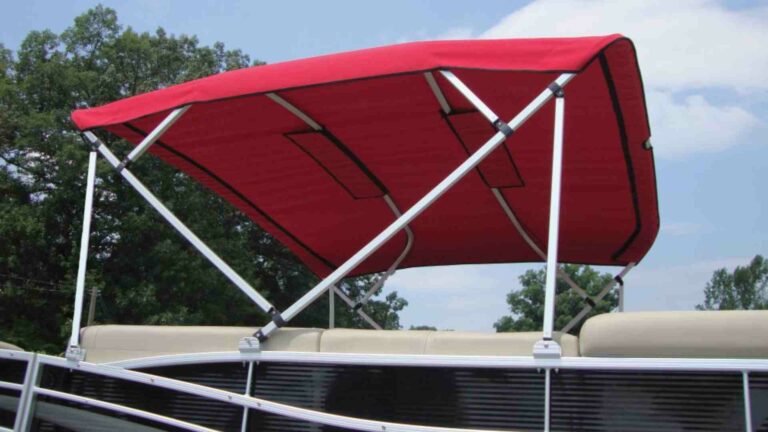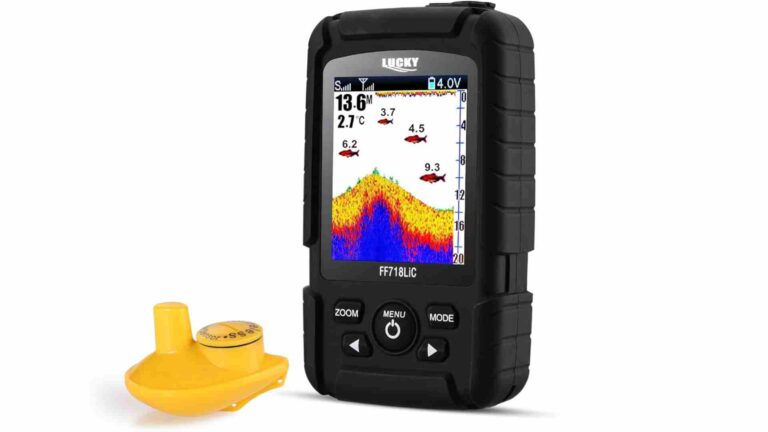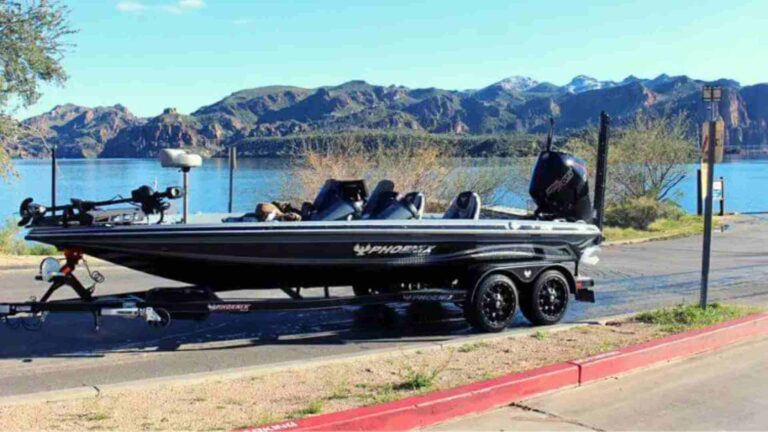Dock Lines for Boats (All You Need to Know)
Discover everything you need to know about dock lines for boats, including how to choose the right type, size, and material. Learn expert tips for tying knots, preventing chafe, and maintaining your dock lines to keep your boat secure in any docking situation.
Whether you’re docking at a waterfront restaurant for a quick meal, renting a transient slip for a weekend getaway, or storing your boat in a permanent slip, one thing remains constant: the need for reliable dock lines. These essential pieces of equipment are the only thing keeping your boat secure at the dock, preventing it from drifting away or colliding with other vessels. Choosing the right dock lines is critical for the safety of your boat, and this comprehensive guide will walk you through everything you need to know—from selecting the best materials and sizes to mastering knots and preventing wear.
Why Dock Lines Matter
Dock lines, also known as mooring or docking lines, serve several critical functions:
- Securing the Boat: They keep your boat tethered to the dock, preventing it from drifting away.
- Stabilizing Position: They hold the boat in place, minimizing movement that could cause it to bump into the dock or other boats.
- Versatility: Dock lines can be used to tie your boat to other vessels or act as tow lines in emergencies.
For boat owners and renters alike, understanding how to choose and use dock lines is fundamental to safe and efficient docking. Improperly sized or worn-out lines can lead to damage, costly repairs, or even the loss of your vessel.
Understanding Dock Line Materials
The material of your dock lines significantly impacts their performance and longevity. Here’s a breakdown of the primary options:
Nylon: The Gold Standard
Nylon is the most popular choice for dock lines due to its unique combination of properties:
- Strength: Nylon is incredibly strong, though it loses 10-15% of its strength when wet.
- Elasticity: It stretches up to 16% of its length at 15% of its breaking strength, absorbing shock loads from waves or tides.
- UV Resistance: Nylon withstands prolonged sun exposure, making it ideal for permanent dock lines.
- Cost-Effectiveness: It’s more affordable than most alternatives, except for polypropylene.
Polyester: A Low-Stretch Alternative
Polyester is stronger and slightly more UV-resistant than nylon but offers less stretch. This makes it suitable for larger boats in protected marinas where minimal movement is desired. However, its lack of elasticity can transmit shock loads to cleats, increasing wear on deck hardware.
Polypropylene: A Poor Choice
Polypropylene is lightweight, floats, and is inexpensive, often used for water-ski ropes. However, it has significant drawbacks:
- Low Strength: It has a lower breaking strength compared to nylon or polyester.
- UV Degradation: It loses strength rapidly in sunlight, often within a year.
- Slickness: Its slippery nature makes it difficult to splice or knot securely.
For most boating applications, nylon is the clear winner due to its balance of strength, stretch, and durability.
Types of Nylon Dock Lines
Nylon dock lines come in two primary constructions: three-strand and braided. Each has distinct advantages and trade-offs.
Three-Strand Nylon
- Appearance: Has a knobby, traditional look.
- Cost: The most affordable option.
- Stretch: Highly elastic, ideal for absorbing shock.
- Splicing: Easy to splice, making it simple to create eye loops.
- Drawbacks: Can stiffen over time, becoming less supple, and may snag less on rough pilings compared to braided lines.
Braided Nylon
- Appearance: Sleek and modern, available in various colors for customization.
- Strength: Slightly stronger than three-strand for the same diameter.
- Handling: Supple and easy to coil, reducing tangling.
- Abrasion Resistance: Better at resisting wear from smooth surfaces.
- Drawbacks: More expensive and prone to snagging on rough pilings, making it less ideal for transient docking.
Braided lines are often preferred for permanent dock lines due to their aesthetics and handling, while three-strand is a practical choice for transient lines due to its cost and durability.
Mega Braid: For Larger Vessels
Mega Braid is a 12-strand single braid from brands like New England Ropes, designed for boats over 70 feet. It’s highly supple, easy to handle, and available in white or black. However, it’s harder to splice and may require professional rigging for custom applications.
Sizing Your Dock Lines
Choosing the correct dock line size involves three key factors: diameter, length, and working load limit (WLL).
Diameter
The diameter of your dock lines should correspond to your boat’s length. A general rule is to use 1/8 inch of line diameter for every 9 feet of boat length, with a minimum diameter of 3/8 inch. Here’s a detailed chart:
| Boat Length | Line Diameter | Approx. Tensile Strength (lbs) |
|---|---|---|
| Up to 20 ft | 3/8″ | 4,200 |
| 20–30 ft | 1/2″ | 7,400 |
| 30–40 ft | 5/8″ | 14,800 |
| 40–70 ft | 3/4″ | 19,000 |
| 70–90 ft | 7/8″ | 28,300 |
| 90–110 ft | 1″ | 33,500 |
| 110–130 ft | 1-1/8″ | 44,900 |
| 130–150 ft | 1-1/4″ | 54,300 |
| 150–180 ft | 1-1/2″ | 74,000 |
For heavier boats, such as trawlers or large cruising sailboats, consider using 1/8 inch of diameter per 8 feet of length to account for added weight.
Length
Dock line length depends on whether you’re using them for permanent or transient docking:
- Bow and Stern Lines: Should be 2/3 to 1.5 times the boat’s length. For permanent slips, measure the exact distance to the dock and add extra for tidal changes.
- Spring Lines: Should equal the boat’s length to prevent fore-and-aft movement. For transient docking, slightly longer lines provide flexibility.
Working Load Limit (WLL)
The WLL is the maximum weight a line can safely support. Ensure the WLL exceeds your boat’s weight and accounts for dynamic loads from waves or wind. The tensile strength values in the chart above provide a safety margin, as the WLL is typically 10-20% of the tensile strength.
How Many Dock Lines Do You Need?
The minimum recommendation is four dock lines: one bow line, one stern line, and two spring lines (forward and aft). However, for optimal security, especially in tidal waters or crowded marinas, six lines are ideal:
- Two bow lines (2/3 boat length each)
- Two stern lines (2/3 boat length each)
- Two spring lines (full boat length each)
Carrying extra lines for transient docking is wise, as many waterfront venues don’t provide them. Ensure you have at least one long line (75–100 feet) for towing or emergencies.
Transient vs. Permanent Dock Lines
Dock lines are categorized based on their use:
Transient Dock Lines
- Purpose: Used for temporary docking at unfamiliar docks, such as restaurants or marinas.
- Features: Typically pre-spliced with a 12-inch eye at one end for easy looping over cleats or pilings. The other end is whipped to prevent fraying.
- Length: Equal to the boat’s length for versatility.
- Material: Three-strand nylon is preferred for its snag resistance and affordability.
Permanent Dock Lines
- Purpose: Fixed to a home slip for consistent use.
- Features: Custom-cut to fit the slip’s dimensions, often with chafe protection (e.g., hose or leather sleeves) at contact points. Eye splices are sized to fit boat cleats snugly.
- Material: Braided nylon is popular for its aesthetics and handling, though three-strand is still effective.
How to Use Dock Lines
Properly using dock lines involves preparation, approach, and knot-tying. Here’s a step-by-step guide:
1. Preparation
- Inspect Lines: Check for chafe, fraying, or UV damage before each use. Replace worn lines immediately.
- Set Up: Secure lines to boat cleats on the side facing the dock. Use a weather hitch knot for temporary holding.
- Fenders: Attach fenders using clove hitches to protect the hull from dock contact.
2. Approaching the Dock
- Scout the Area: Perform a “float by” to assess available slips or contact the dockmaster via VHF Channel 16.
- Slow Approach: Move at the slowest speed possible to maintain control. Be ready to shift into reverse if needed.
- Positioning: Decide which side of the boat will face the dock and prepare lines accordingly.
3. Securing the Boat
- Throwing the Line: Stand at the bow, aim for a cleat or piling, and throw the line underhand with a sidearm motion to form a loop around the target.
- Order of Tying: Secure the bow line first, followed by the stern line, then the spring lines. In tidal waters, leave extra slack to accommodate water level changes.
- Knots: Use a cleat hitch for cleats (one full turn around the base, a cross turn, and a locking turn) or a clove hitch for pilings.
4. Dipping the Eye
In busy marinas, “dipping the eye” is a courteous technique to allow other boats to depart without disturbing your lines:
- Pass your line’s eye through the eye of another boat’s line on the same piling or cleat.
- Drop your eye over the piling or cleat, positioning it below the other line.
- This allows the other boat to lift their line off without affecting yours.
Essential Knots for Dock Lines
Mastering a few knots is crucial for secure docking. Here are the most important:
Cleat Hitch
- Difficulty: 1/10
- Steps:
- Take a full turn around the cleat’s base.
- Cross the line over the cleat.
- Make a locking turn by passing the line under one horn.
- Use: Securing lines to boat or dock cleats.
Clove Hitch
- Difficulty: 2/10
- Steps:
- Make a loop around the piling or rail.
- Cross the line over itself and make a second loop.
- Tuck the end under the second loop and pull tight.
- Use: Attaching fenders or securing lines to pilings.
Figure Eight Knot
- Steps:
- Make a small loop near the rope’s end.
- Pass the end around the standing part and through the loop.
- Pull tight to form a figure-eight shape.
- Use: Creating a stopper knot to prevent lines from slipping.
Knots like the bowline are less ideal, as they reduce line strength by about 40%, compared to a splice’s 95% retention.
Preventing Chafe
Chafe, caused by lines rubbing against docks or boat hardware, is the leading cause of dock line failure. To minimize it:
- Chafe Guards: Use sleeves, hose sections, or leather pads at contact points.
- Proper Sizing: Ensure lines aren’t too large (causing sagging) or too tight (increasing friction).
- Hardware Protection: Use eye splices with thimbles and shackles for rings, or short chain loops for cleats, to reduce abrasion.
- Regular Checks: Inspect lines for wear after every docking session and address issues promptly.
Maintaining Your Dock Lines
Proper care extends the life of your dock lines:
- Rinse After Use: Wash with fresh water to remove salt, which can degrade fibers.
- Clean Periodically: For double-braid lines, wash in a pillowcase using a top-loading washing machine with detergent and fabric softener. Avoid front-loading machines.
- Store Properly: Keep lines in a cool, dry, shaded area to prevent UV damage and mold.
- Inspect Regularly: Replace lines showing fraying, stiffness, or significant fading.
Common Mistakes to Avoid
New boaters often make these errors:
- Using Short Lines: Lines that are too short can cause the boat to rub against the dock, leading to damage.
- Thin Lines: Undersized lines may snap under strain, especially in rough conditions.
- Improper Throwing: Throwing lines without enough speed or spin can result in tangling or missing the target.
- Wrong Knots: Using knots like the bowline instead of cleat or clove hitches reduces line strength.
- Neglecting Tides: Failing to account for tidal changes can leave boats hanging or swamped.
Dock Line Specifications and Pricing
Dock lines vary in price based on material, construction, and length. Here’s a sample of typical options from major retailers like West Marine:
| Product | Diameter | Length | Price (USD) | Features |
|---|---|---|---|---|
| West Marine 3-Strand Nylon | 3/8″ | 15 ft | $20–$25 | Pre-spliced eye, white |
| New England Double Braid | 1/2″ | 25 ft | $40–$50 | Color options, high abrasion resistance |
| Mega Braid (Custom) | 7/8″ | 50 ft | $150–$200 | Supple, for boats >70 ft, white/black |
| Polypropylene (Basic) | 3/8″ | 20 ft | $10–$15 | Floats, low UV resistance |
Tools for Customization:
- Hollow Fid: $10–$20 (for splicing three-strand lines)
- Whipping Twine: $5–$10 (for securing ends)
- Hot Knife: $30–$50 (for clean cuts)
- Chafe Gear (Hose): $5–$15 per foot
Prices are approximate and may vary by retailer or region. Check with authorized dealers for availability.
Docking Environment Considerations
The docking environment influences your choice of dock lines:
- Protected Waters: Smaller diameters may suffice in calm conditions with minimal wave action.
- Open Waters/Tidal Areas: Use larger diameters and higher tensile strength to handle wind, waves, and tidal shifts.
- Floating vs. Fixed Docks: Floating docks allow tighter lines, as they rise and fall with the boat. Fixed docks require extra slack for tidal changes.
Chart: Docking Line Configuration
Below is a visual representation of a typical docking setup using syntax:

This diagram shows a boat secured with bow, stern, and spring lines, including a dipped eye for courtesy.
Dockside Courtesy
Beyond technical skills, dockside etiquette enhances safety and community:
- Offer Assistance: Help incoming boats if you’re free, especially in crowded marinas.
- Dipping the Eye: As described, this ensures other boats can depart easily.
- Minimize Wake: Approach docks slowly to avoid disturbing other vessels.
- Respect Space: Avoid blocking slips or tying lines across walkways.
Conclusion
Dock lines are the unsung heroes of boating, ensuring your vessel stays secure whether you’re dining at a waterfront restaurant or moored in your home slip. By choosing nylon lines—preferably three-strand for transient docking or braided for permanent slips—and sizing them correctly (1/8 inch diameter per 9 feet of boat length), you’ll protect your boat from damage and ensure safe docking. Master essential knots like the cleat hitch and clove hitch, use chafe guards to prevent wear, and maintain your lines through regular cleaning and storage. With these practices, you’ll dock like a pro, keeping your boat and others safe in any conditions.
For more boating tips, explore related guides on mastering docking techniques, tying essential knots, and avoiding overloading your vessel. Safe boating!
Happy Boating!
Share Dock Lines for Boats (All You Need to Know) with your friends and leave a comment below with your thoughts.
Read 10 Best Dock Bumpers for Protecting Boats from Impacts until we meet in the next article.






